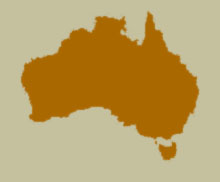Synonyms
Coccinella bilunulata Boisduval, 1835: 594.
Diagnosis
This is very distinctive species, immediately recognizable by its size and the presence of a single macula in each elytron.
Description
Length 4.5-7.7 mm. Male. Dorsal surface predominantly metallic dark bluish; each elytron with a single macula anteriorly; first abdominal ventrite blackish between the postcoxal lines, yellowish laterally; second abdominal ventrite mainly yellowish with a median rather narrow dark brownish macula; antennae, labrum, labial palp, meso, and metepimeron, meso, and metepisternum yellowish; rest blackish. Body oval, convex. Head micro reticulate between punctures; punctation about as large as eye facets, nearly 1.5 to 2 diameters apart. Eyes with inner margin nearly parallel. Antenna 9-segmented; pedicel about as long as wide; 3rd antennomere transverse, somewhat subquadrate; 9th elongate, about 2 times longer than basal width. Terminal maxillary palpomere with sides nearly parallel; terminal labial palpomere elongate; about 3 times longer than basal width; about as long as preceding segment. Pronotal surface sculptured as on head; punctation about as large as eye facets, approximately 1.5 to 2 diameters apart; the punctures not confluent on anterior angles, getting only slightly deeper; anterior angles without distinct strigae; lateral borders rounded; bordering line uninterrupted at base, the line distinctly bordering the lateral border; prosternum short in front of coxae, about 1.5 times longer than prosternal process widest width; hind tibiae with outer tooth; tarsal claws simple. Elytral surface sculptured as on pronotum, visibly weaker; punctation stronger than on pronotum, slightly deeper and more concentrated; lateral margin slightly reflexed, without clear bead; epipleural foveae absent. Abdomen with 6 ventrites; 6th very short, emarginate at apex; surface of ventrite 1 micro reticulate between postcoxal lines; postcoxal lines joined at middle; recurving apically, reaching more than half the ventrite width, apical border of intercoxal process slightly swollen.
Male
Tegmen relatively short, about 1/2 the abdomen length; penis guide symmetrical, distinctly shorter than parameres; parameres sparsely setose, the setae short; strut about as long as tegmen; penis as fugured.
Female
Female externally identical to male, except having only 5 visible abdominal ventrites, the 5th ventrite large and rounded, about 2 times longer than 4th.
Variation
UNDER CONSTRUCTION
 Distribution and Biology
Distribution and Biology
UNDER CONSTRUCTION
Species References
Boisduval, J.B.A. 1835. Voyage de Découvertes de l'Astrolabe. Exécuté par ordre du Roi, Pendant les Années 1826-1827-1828-1829, sous le Commandement de M. J. Dumont d'Urville. Faune Entomologique de l'Océan Pacifique, avec l'illustration des Insectes Nouveaux Recueillis Pendant le voyage, Deuxième Partie. Coléoptères et autres ordres. J. Tastu, Paris, viii + 716 pp.
Slipinski, S.A. 2007. Australian Ladybird Beetles (Coleoptera: Coccinellidae) their biology and classification. ABRS, Canberra. 286 pp.
Slipinski, A. and Giorgi, J.A. 2006. Revision of the Australian Coccinellidae (Coccinellidae). Part 6. Tribe Chilocorini. Annales Zoologici (Warszawa), 56(2): 265-304.
[ Top ]
